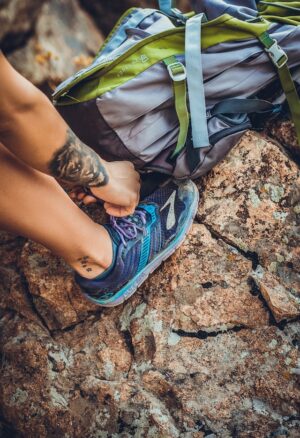Check out our latest news!
- How to Market a Climbing Center? Expert Tips

Hello, fellow climbing enthusiast!
We are excited to tell you everything we know about promoting a climbing center through marketing. The tips we are about to share with you are the result of our experience as well as the advice gathered from the best web agencies, collected by us online. So, if you own a climbing center, you already have the perfect starting point to attract and engage people like us who love vertical adventures!
Who is your target audience?
To begin, it’s crucial to understand who your target audience is. I imagine you want to attract both seasoned climbers and enthusiastic beginners, right? Well, focus on communicating a message that resonates with both groups.
Do you have a website?
When it comes to online promotion, your website is your digital identity. Make sure it’s appealing, easy to navigate, and filled with useful information. Share your personal story, how you discovered climbing, and what motivated you to create the center. This will create an empathetic connection with your potential customers and make them more likely to visit.
Also, your website should be optimized for search engines and, if it’s not the case, make sure you find a web agency right away!

Are you getting the most out of Social Media platforms?
It’s time to leverage the power of social media! Create compelling pages on platforms like Facebook, Instagram, and Twitter. Share engaging photos and videos that showcase the excitement and challenge of climbing. Organize contests or offer special discounts for those who share your content or bring new friends to the center. This way, you will create a virtual community of climbing enthusiasts and promote interaction among your customers.
Additionally, don’t forget the importance of reviews. Ask your satisfied customers to leave positive feedback on review sites lke TripAdvisor or Google. Positive testimonials are crucial for building trust and attracting new customers.
Do you engage in offline activities?
In addition to online promotion, consider collaborating with local climbing influencers or athletes. They could organize special events at your center, give lessons, or even become brand ambassadors. These partnerships can bring visibility and credibility to your climbing center.
Furthermore, think about organizing climbing events or competitions. These special moments create an atmosphere of excitement and offer an opportunity to introduce your center to a wider audience. Make sure to promote them through local ads, flyers, or your network of contacts.
Another effective way to promote your center is by offering free trial sessions or introductory discounts. This allows people to experience climbing without any initial financial commitment. You can promote these offers through local ads, social media, and your website. Emphasize the physical, mental, and emotional benefits of climbing, such as improved strength, flexibility, balance, and focus.
Is your center up to date?
Lastly, always keep an eye on the latest trends and innovations in the world of sport climbing. Attend industry events or conferences to stay updated on the latest technologies, equipment, and climbing styles. This will allow you to offer innovative experiences and attract enthusiasts who are looking for something new and exciting.
In conclusion
Promoting a climbing center requires a combination of creative, engaging, and targeted marketing strategies. By leveraging your personal experience and fostering an empathetic connection with your audience, you can convey the passion for climbing and create a welcoming atmosphere that attracts both seasoned climbers and enthusiastic beginners.
Through online marketing, harness the power of social media, create an appealing website, and engage your virtual community. By sharing interesting content, organizing contests, and offering special discounts, you can foster a sense of belonging and encourage interaction among your customers.
Don’t forget the importance of reviews and positive testimonials, which build trust and credibility for your climbing center. Additionally, collaborations with local influencers or atletes and the organization of special events can increase visibility and appeal.
As you implement these marketing strategies, remember to also engage in offline activities and stay updated on the latest trends and innovations in the sport climbing industry. Let your passion and dedication for this extraordinary sport guide you in creating a unique experience for your customers.
Follow our blog for more insights on managing your climbing center!
- Clothing and Equipment for Safe Climbing

The choice of clothing and equipment for climbing varies based on factors such as the climber’s experience level, climbing style, and weather conditions. However, there are certain items that are essential for any climber, regardless of these factors. Let’s take a look at them.
Simple and Essential Clothing
There is no need to search for specific clothing items; to climb comfortably and safely, it is enough to dress in comfortable and lightweight attire. Everyone has their own sense of comfort, and some climbers feel comfortable climbing even in jeans. However, we still recommend opting for a breathable t-shirt and long pants that allow free movement and reaching the most challenging points. Depending on the season, you may prefer short-sleeved t-shirts, tank tops, thermal shirts, or lightweight fleeces. The main idea is always to wear what makes you feel comfortable and free.

Must-Have Climbing Equipment
The tools you cannot do without during your climbing sessions are:
Helmet: An important element to protect your head from potential rock falls or other hazards. When choosing your helmet, make sure it is adjustable so that it is not too tight but remains securely on your head. Most helmets have a rear dial that allows you to tighten or loosen it according to your preference. Another factor to consider is ventilation; generally, foam-based helmets offer better ventilation. You should also check the fit of the chin strap buckle so that once the helmet is fastened, it doesn’t feel loose.
Climbing shoes: Essential for climbing safely and having a good grip on the rock. When choosing climbing shoes, it is important to consider three factors: the morphology of your feet, including width and shape, the intended use of the shoes (the type of wall or duration of use), and your experience level. For example, if you are a beginner, it is advisable to use stiffer models that properly support your feet.
Slings and carabiners: Important for securing the climber to the rock and therefore must be very sturdy and safe. When choosing carabiners, make sure they comply with EU regulations. Then, you can choose to use carabiners with locking gates that offer maximum security or basic carabiners without a locking mechanism, primarily used as quickdraws.
Rope: Used for progression along the wall. It should be chosen based on the type of climbing, and its length should vary according to the route length. There are different types of ropes designed to meet various needs. Single ropes are the most common and are designed to be used alone. Twin ropes, as the name suggests, are meant to be used in pairs, are lighter, have a smaller diameter, and need to be attached together at each anchor. Half ropes are also designed to be used in pairs, but unlike twin ropes, they don’t need to be attached together at each anchor.
Chalk bag: This is the bag used to carry magnesium carbonate (chalk). Chalk is essential for any type of climbing as it helps dry your hands and make them more grippy on the rock. Therefore, it should always be within reach in the designated bag.
Harness: Used to secure the climber to the rope, it should be comfortable and fit well on the body. Finding the right harness for you is crucial to ensure you can be properly secured in case of a fall and to allow you to move freely during climbing.
It is also important to always have a first aid kit with you to respond to any eventualities that may occur during climbing, as well as a water bottle. Finally, before starting any climb, we recommend checking the weather forecast and ensuring you have all the appropriate equipment and clothing.
Once you have purchased all the necessary gear and clothing, you may consider personalizing them to make them recognizable
and unique. For this purpose, you can rely on a graphic agency that will customize your sportswear, making you stand out from the crowd!
Personalizing your clothing and equipment not only adds a touch of individuality but also makes it easier to identify your gear among others. It can be especially helpful when climbing in a group or in busy climbing areas.
Consider adding your name, initials, or a unique design to your helmet, harness, or chalk bag. This way, you’ll not only have gear that reflects your personal style but also makes it easier to distinguish it from others.
There are various methods to personalize your climbing equipment, such as embroidery, heat transfer, or custom stickers. Choose a reputable graphic agency or contact a local printing shop specializing in customizations to discuss your ideas and find the best method for your gear.
Remember, personalizing your climbing equipment is not only about aesthetics but also about safety. When others can easily recognize your gear, it reduces the chance of mix-ups or confusion, ensuring that you use your own trusted equipment every time.
So, go ahead and make your climbing gear unique and recognizable, while staying safe and enjoying the thrill of the sport!